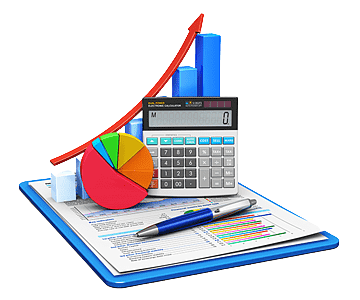Business Budget: Types of Budgets and Examples
What is Business Budget?
A business budget is a financial roadmap that outlines the estimated income and expenses of a company over a specified period, often a fiscal year. It serves as a strategic tool that helps businesses plan, track, and manage their financial resources effectively to achieve their goals and objectives.
Business Budgets can be generated for variable costs, fixed costs, variable expenses, business expenses, labor budget, overhead costs, production costs, advertising costs, labor costs, payroll costs etc.
There are different types of business budgets are made. These are made based on business goals to achieve and the business finances needed to achieve them.
- Master budget
- Labor budget
- Business budgets
- Cash budgets
- Cash flow budgets
Most of the cases, financial statements like balance sheet or Income statement are used as a foundation to arrive and define the budgets at accounting level. Management team uses current financial records to arrive at future cash flow and budgets. A majority of budgets are divided into Capital budget (For the machines purchase etc), departmental budget (Expansion or Sales plans etc), Sales and Marketing Budgets etc.

What do you mean by budget?
A budget is a detailed plan that quantifies an organization’s expected revenues, expenditures, and financial goals. It acts as a blueprint for financial management and guides decision-making by setting limits and priorities on spending.
How you define spend?
Spend refers to the financial resources a business allocates for various activities, expenses, and investments. Effective spending involves strategic allocation of funds to maximize returns and achieve business objectives.
What are the components of budget? What should a business budget include?
Creating a comprehensive business budget involves considering various components that cover different aspects of your organization’s financial operations. Let’s delve into each of these components with illustrative examples:
1. Revenue Projection
This component estimates the income your business expects to generate from sales, services, or other sources.
Example: Suppose you run an e-commerce store. Your projected revenue could include sales from various product categories, such as electronics, clothing, and accessories. If your average monthly revenue from electronics is $10,000, from clothing is $5,000, and from accessories is $3,000, your projected monthly revenue would be $18,000.
2. Operating Expenses
Operating expenses encompass the day-to-day costs of running your business, including rent, utilities, salaries, marketing, and supplies.
Example: Imagine you manage a restaurant. Your operating expenses might include rent ($3,000), employee salaries ($8,000), food and beverage costs ($6,000), marketing expenses ($1,000), and utilities ($500). These expenses would collectively shape your monthly operating budget.
3. Capital Expenditures
Capital expenditures involve investments in assets like equipment, machinery, or property that contribute to long-term growth.
Example: Suppose you own a manufacturing company. If you plan to purchase a new industrial machine for $50,000, that investment would be considered a capital expenditure. This cost would be included in your budget under the capital expenditures category.
4. Debt Service
Debt service includes payments on loans and interest. It’s important to account for these financial obligations in your budget.
Example: If your business took out a loan of $100,000 to expand its operations and the monthly loan payment is $2,000, you would include this payment in your budget under the debt service category.
5. Contingency Fund
A contingency fund is a reserve of funds set aside to cover unexpected expenses or emergencies.
Example: For instance, if you’re a technology startup, you might allocate a percentage of your budget (e.g., 5%) as a contingency fund to handle unexpected software glitches, hardware failures, or other unforeseen issues that might arise during the year.
6. Profit Targets
Profit targets establish the desired level of profitability your business aims to achieve.
Example: Let’s say your business sets a profit target of $30,000 per month. This means you aim to generate a net profit of $30,000 after deducting all expenses from your projected revenue.
By incorporating these components into your business budget, you create a comprehensive financial plan that guides your decision-making, helps allocate resources effectively, and provides a clear roadmap for achieving your financial goals. Remember that creating a detailed and accurate budget requires careful consideration of historical data, market trends, and future projections to ensure it aligns with your business’s reality.
|
What are the 7 types of budgets?
There are various types of budgets that businesses can use to manage different aspects of their operations:
Sales Budget: This budget estimates the expected sales revenue for a specific period, often based on historical sales data and market trends.
Production Budget: The production budget outlines the number of units to be manufactured to meet projected sales demand.
Operating Budget: This budget covers day-to-day operational expenses, including salaries, rent, utilities, and administrative costs.
Financial Budget: The financial budget focuses on financial aspects like cash flow, capital expenditures, and financing activities.
Cash Budget: A cash budget predicts cash inflows and outflows to ensure sufficient liquidity for operations.
Master Budget: The master budget consolidates all other budgets to provide an overall financial plan for the business.
Flexible Budget: A flexible budget adjusts based on variations in business activity, allowing for more accurate budgeting in dynamic environments.
For instance, a manufacturing company may use a sales budget to estimate the units of a product they expect to sell, which then informs their production budget detailing how many units they need to produce. The operating budget covers expenses like raw materials and labor needed for production. The financial budget might include projections for loan repayments or new equipment purchases. A cash budget ensures the company has the necessary cash to cover these activities. All of these budgets together create the master budget, while a flexible budget allows adjustments based on changes in demand or other external factors.
What is master budget?
A master budget is an integrated and comprehensive financial plan that consolidates all individual budgets within a company into a single cohesive framework. It serves as the guiding financial roadmap for the entire organization, providing a holistic view of planned revenues, expenses, and profitability.
Imagine you own a retail business that sells clothing. Your master budget would include various budgets like the sales budget, production budget, operating budget, and financial budget. The sales budget estimates the total sales revenue, the production budget outlines the required production levels, the operating budget covers day-to-day operational expenses, and the financial budget includes cash flow projections and capital investments.
The master budget would combine all these elements to provide a comprehensive overview of your business’s financial plan for the upcoming year.
What is fixed budget?
A fixed budget is a budget that remains unchanged regardless of fluctuations in business activity or sales levels. It’s often based on a set amount and does not adjust to variations in revenue or expenses.
Let’s say you’re managing a marketing team, and your annual budget for advertising expenses is fixed at $50,000. This means that irrespective of whether your sales increase or decrease, your advertising budget remains constant at $50,000 for the entire year.
While a fixed budget provides stability, it might not accommodate changes in demand or unforeseen circumstances.
What is cash budget?
A cash budget is a projection of a company’s expected cash inflows and outflows over a specific period. It helps businesses ensure they have sufficient cash on hand to cover expenses and make timely payments.
Suppose you run a small bakery. Your cash budget for the upcoming month includes estimated cash inflows from customer sales, wholesale orders, and payments from clients who ordered custom cakes. On the other hand, you list out cash outflows like ingredient purchases, employee salaries, rent, and utility bills.
By comparing your projected cash inflows and outflows, you can identify periods when you might have surplus cash or potential shortages.
Why is budgeting important?
Budgeting is crucial as it:
- Guides Financial Decisions: Helps allocate resources effectively and prioritize spending.
- Aids Planning: Assists in setting achievable goals and objectives.
- Controls Spending: Prevents overspending and financial waste.
- Measures Performance: Provides a benchmark to evaluate actual performance against projections.
- Supports Growth: Facilitates strategic investments and expansion plans.
Types of budget in management accounting
In management accounting, budgets can be categorized into operating budgets, financial budgets, and master budgets. Operating budgets focus on operational activities, financial budgets deal with cash and capital, and the master budget integrates all budgets.
Government budget and its components
A government budget outlines a nation’s planned revenue and expenditures for a fiscal year. Its components include revenue estimates, expenditure allocations, deficit or surplus projections, and strategies to manage public finances.
Creating and adhering to a well-structured business budget offers numerous benefits. It empowers businesses to make informed financial decisions, allocate resources strategically, and navigate uncertainties while aiming for sustainable growth. By encompassing various budget types and components, businesses can effectively manage their finances and work towards achieving their long-term objectives.

